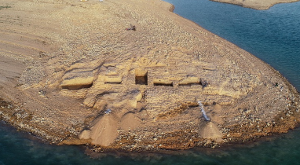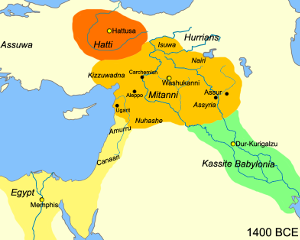|
Drought Reveals 3,400-year-old Palace
June 30, 2019
A drought has lowered water levels in an Iraqi reservoir so much that an ancient palace is once again visible. The palace stood fewer than 70 feet from what was the eastern bank of the Tigris River. Large mud brick walls dominate the western edge of the palace, which was built on sloping terrain. According to cuneiform writing on a tablet found at the sight, the palace was called Kemune, dates to about 1800 B.C., and was established by the Mitanni Empire, which ruled over what is now parts of Syria and was then Mesopotamia and ancient Syria. A joint German-Iraqi team has done excavations at the site and have reported finding eight rooms and a number of wall paintings. They also found more clay tablets with writing on them. The empire was at its height from 1500 B.C. to 1350 B.C. That dating would put the civilization in power before the Trojan War. Sources from other civilizations mention the Mittani as being part of a coalition that was defeated by an Egyptian army under the pharaoh Thutmose III in 1457 B.C., at the Battle of Megiddo. A few decades later, according to Egyptian sources, the pharaoh Amenhotep III married Princess Tadupeha, daughter of the Mittani King Tushratta. The more well-known Assyrians and Hittites eventually subsumed Mittani lands. |
|
Social Studies for Kids
copyright 2002–2024
David White






